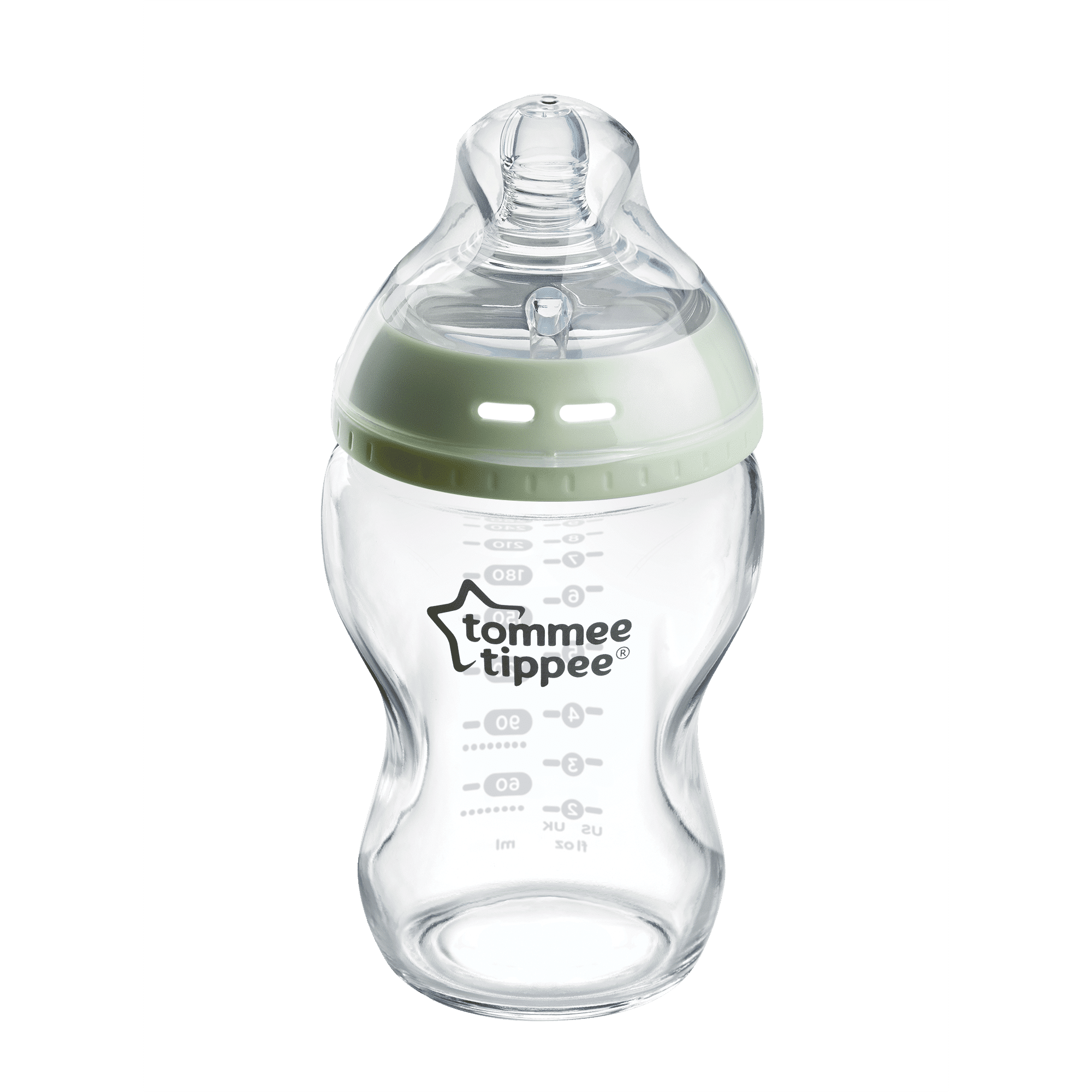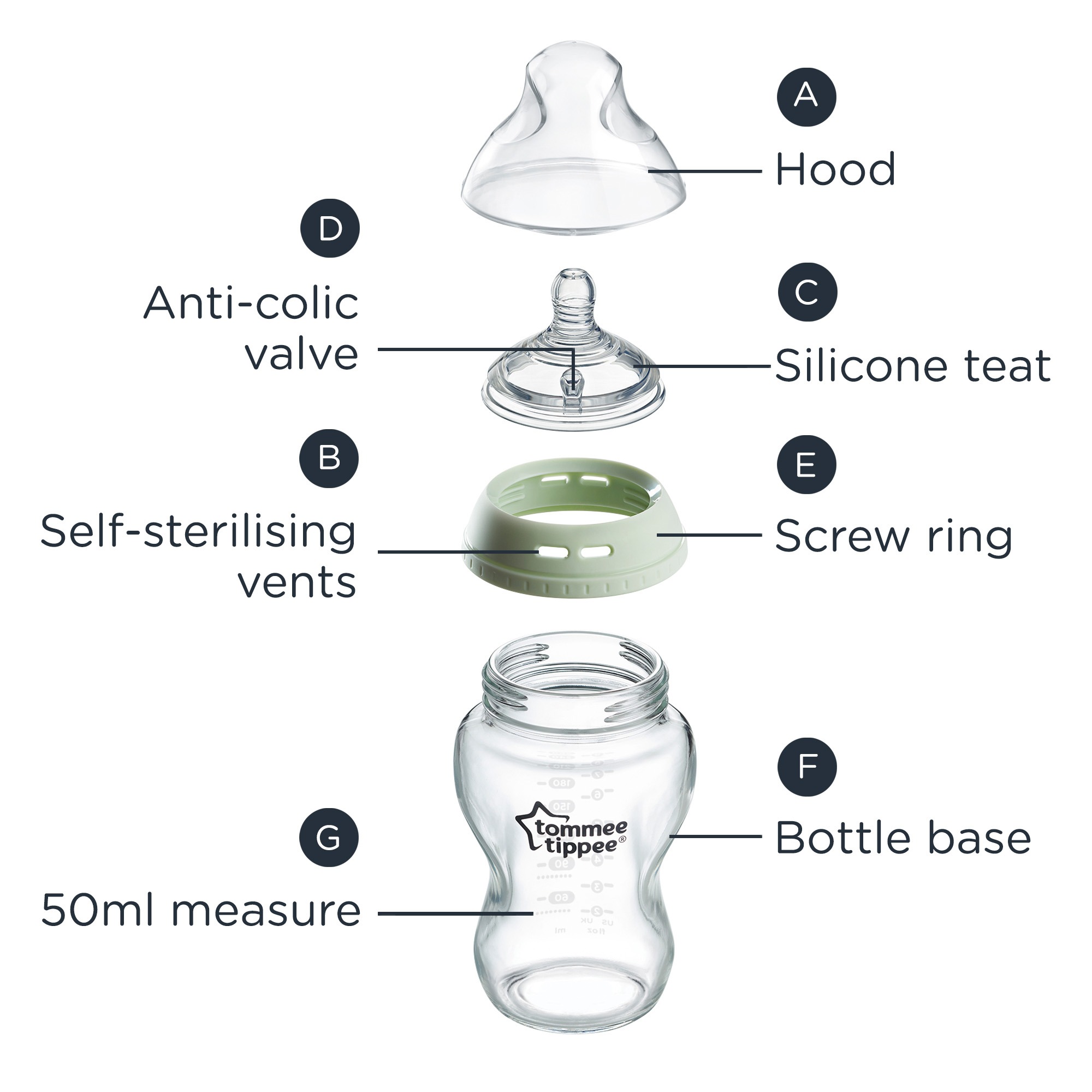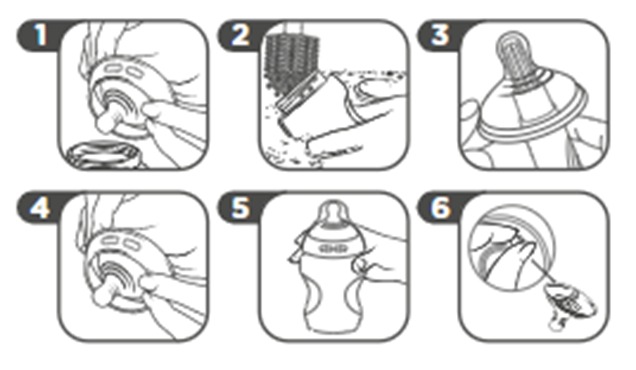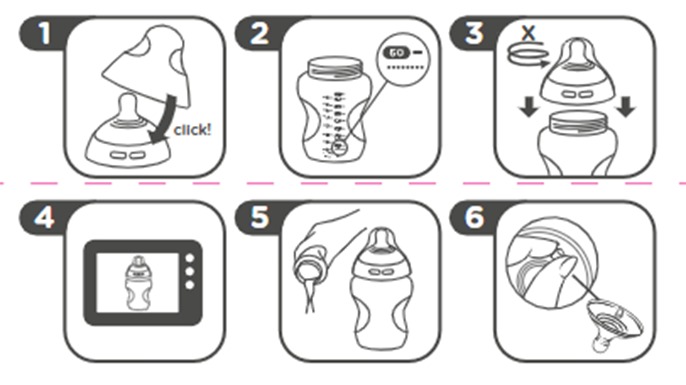Stuck on how to use one of our products?
Not sure how to clean them?
Find all the useful support information right here.


Preparing for use
Before first use, disassemble and place all components in boiling water for 5 minutes to ensure hygiene. Follow the below steps to ensure your bottle is safe and ready to use:

How to self-sterilize in a microwave
This method allows you to easily sterilize bottles using a microwave. Before self-sterilizing, always wash all components thoroughly and rinse in clear water or use a dishwasher (top shelf only).

Microwave recommended times for all bottle sizes. Based on microwaves from 700 to 1000 Watts.

Storage and use
How to clean
We’ve prepared some common questions and troubleshooting advice to help you with your new Natural Start Glass Bottle.
Where should the valve be when I'm feeding my baby?
The valve will work wherever it’s positioned but the best place for the valve is at the top, near your baby's nose.
Can I use Advanced Anti-Colic nipples on Natural Start bottles?
The simple answer is no, due to the different valves. Most of our products have interchangeable parts to make life as simple as possible. But the Natural Start teats have a built-in air valve, and don’t work properly on our Advanced Anti-Colic bottles.
How long do teats last?
Teats take quite a lot of hammering from little gums and teeth, so they need to be changed regularly. We recommend replacing teats every 2-months or at the first sign of any damage or weakness.
Can I buy bottles with faster flowing teats?
All of our bottles except the 340ml version currently come with slow flow teats as standard, as they’re best for newborns and most parents generally stock up on bottles before baby arrives. Our 340ml bottle comes with a medium flow teat.
As your baby grows and can feed more quickly, you can buy faster flowing replacement teats.
We have medium flow teats, which most babies are ready for at around 3 months, and a fast flow teat which is best from around 6 months. The ages are only guides though - you know your baby better than anyone and will be able to tell when they’re ready for a faster flow.
Can I store breast milk in bottles?
Yes, our bottles love to look after your breast milk. We even have special lids that you can pop on to store your milk in the fridge or freezer. If you’re expressing and storing breast milk, our Express and Go™ range may be handy too - it features a clever pouch that you use to express, store, warm and feed (it’s our all in one show). This means there’s no need to transfer milk at any stage, so you’ll never lose a precious drop.
Can I recycle my bottles when I'm done?
Yes. Our Natural start glass bottles can be recycled.
How does the anti-colic valve in the teat work?
The anti-colic valve in the teat prevents excessive air from getting into the baby’s milk, helping to reduce the symptoms of colic. The valve is designed to allow air to enter and seal with every gulp, making it anti-colic and leak-proof.
Why are there small holes in the screw ring?
The small holes allow the steam to flow and reach the external surface of the teat and the internal surface of the hood.
PLEASE NOTE: It’s important that the silicone teat is not tighten on to base when self-sterilizing in microwave to allow the steam to flow in.
How does the self-sterilizing function work?
The 50ml of water in the bottle will turn into steam when microwaved*. The steam reaches the temperature necessary to sterilize, killing virus and 99.9% of bacteria. The steam travels around the bottle and through the holes in the screw ring to reach the external surface of the teat and the internal surface of the hood.
*Based on microwaves from 700 to 1000 Watts.
What happened to Closer to Nature™ bottles?
Our Closer to Nature bottles have been replaced by our new Natural Start Bottles. They’re the same in nearly every way; the only change is that we’ve made it possible to self-sterilize them in the microwave now and they’ve got new packaging and a new name.